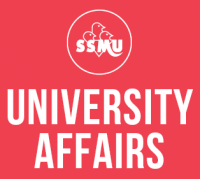
McGill was initially not a prestigious academic institution. The school’s infrastructure was decrepit, few courses were taught, and only a handful of degrees were conferred annually. Often instructors could not be compensated and resources like candles and fuel were scarce. These financial problems culminated in the 1850s when McGill buildings had to be evacuated due to structural deficiencies. In the 1860s, McGill swiftly transitioned out of near-bankruptcy and developed into a renowned educational institution. This sudden reversal of fortune can be attributed to two events: the principalship of John William Dawson and a loan taken out from a trust fund set aside by the Crown for Indigenous communities.
On June 14 1860, the Executive Council of the Crown from the Province of Canada withdrew $40,000 from the General Indian Trust Fund and loaned the money to McGill College. This deal was secured by former McGill principal Charles Dewey Day, who was paid $8000 for procuring the loan. Philip Monture, director of the Land Claims Research Office at the Six Nations of the Grand River from 1975 to 2002, discovered that Day’s $8000 payment was also withdrawn from a fund allocated to the Six Nations of the Grand River. While McGill claims that its debt with the federal government was settled in 1873, money was never returned to the Indigenous communities from whom it was taken.
Following Monture’s 1989 discovery, elected council representing Six Nations filed a statement of claim against Canada and Ontario in 1995. The negotiations with the government were unsuccessful and the litigation needed to be reintroduced in 2009. McGill has continually asserted that its debt to the government has been repaid, and that the money’s ties to Six Nations remain unclear.
Following Monture’s 1989 discovery, elected council representing Six Nations filed a statement of claim against Canada and Ontario in 1995. The negotiations with the government were unsuccessful and the litigation needed to be reintroduced in 2009. McGill has continually asserted that its debt to the government has been repaid, and that the money’s ties to Six Nations remain unclear.
Even if acknowledged, the debt is not feasibly repayable; some place its current value near $1.7 billion. Alternative methods of repayment that have been recommended include McGill funding the First Peoples House or developing scholarships for Indigenous students.
Further Reading – Six Nations Land Claims Booklet

